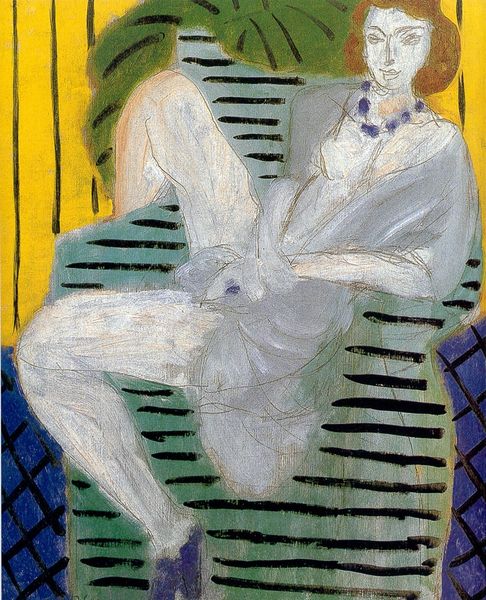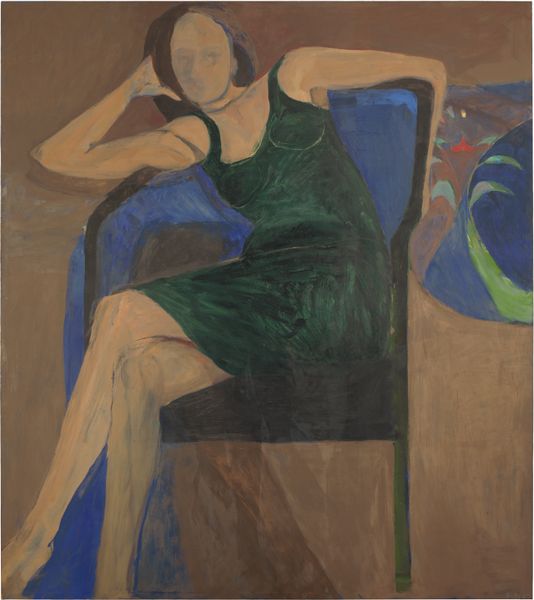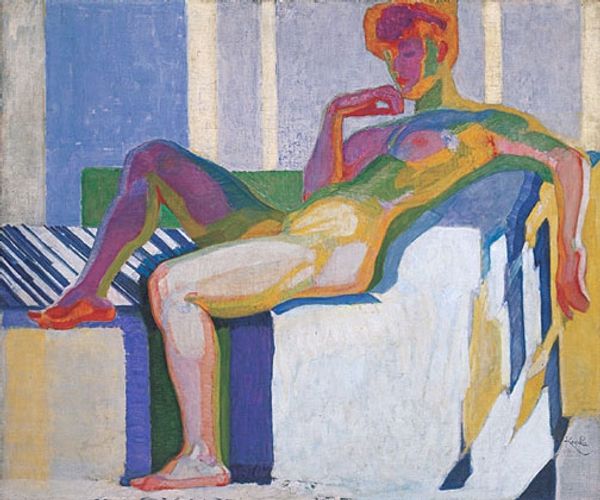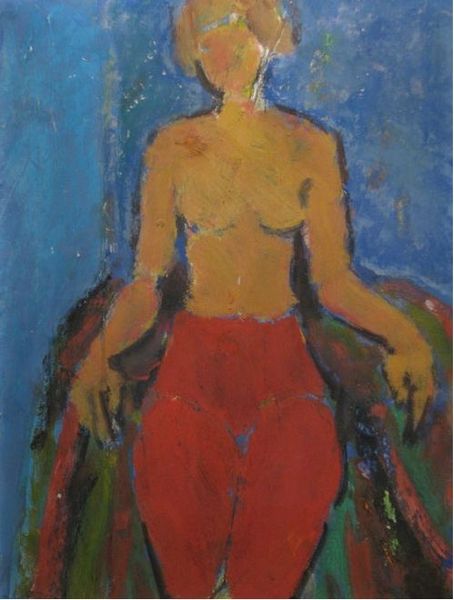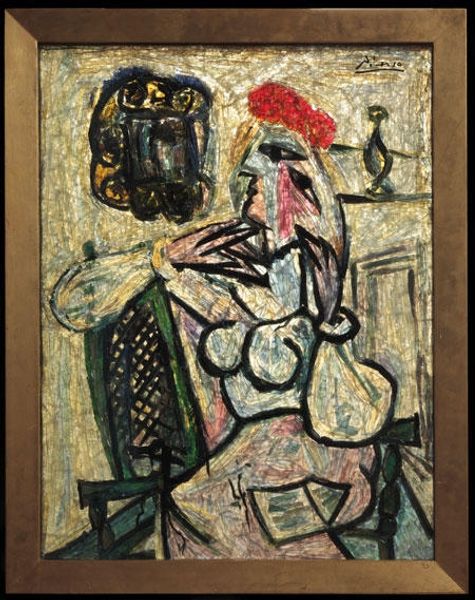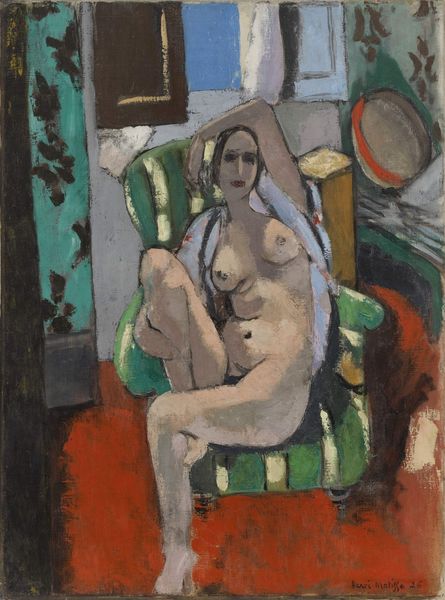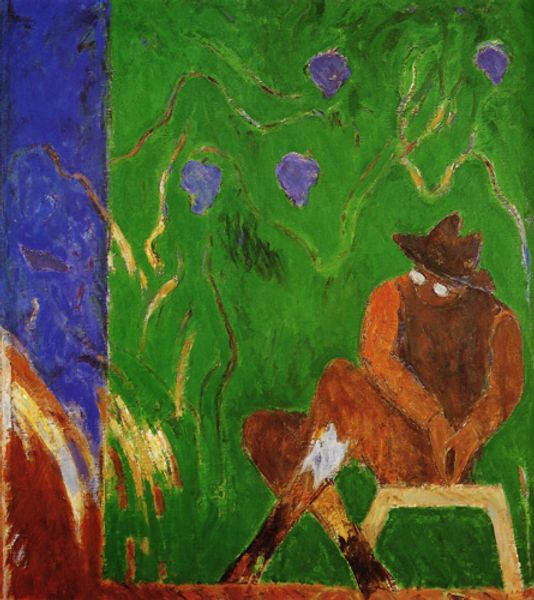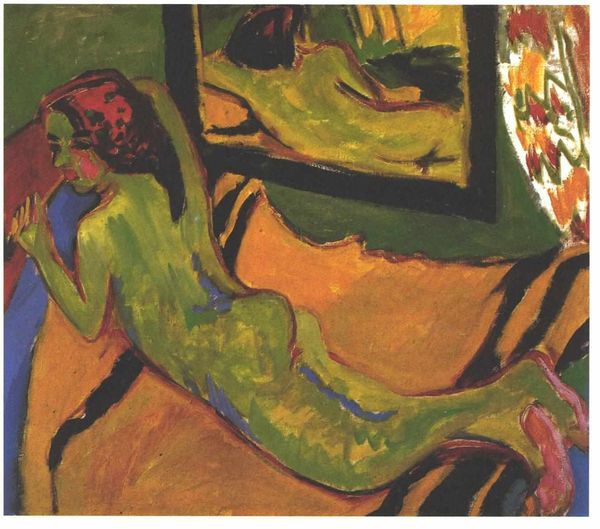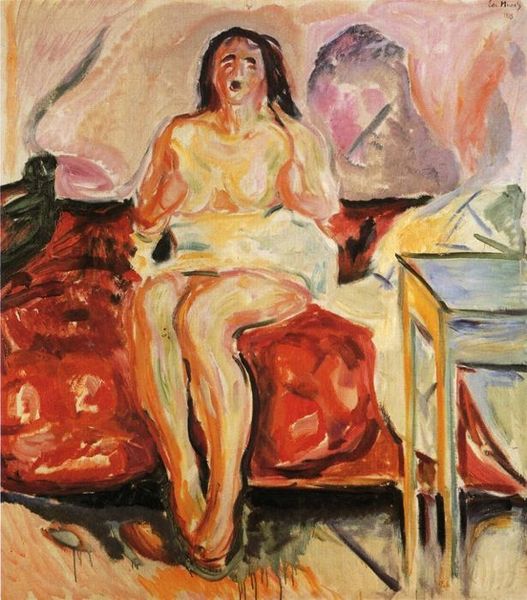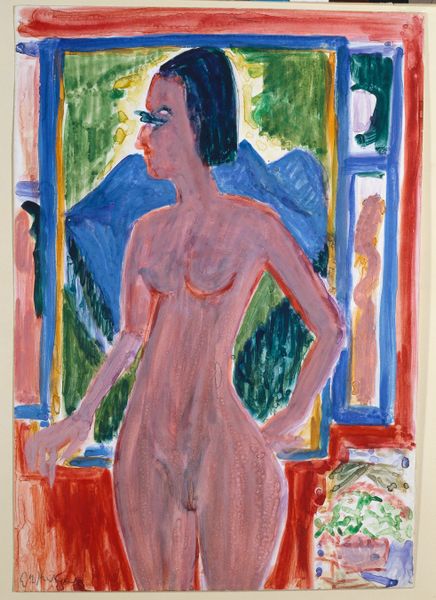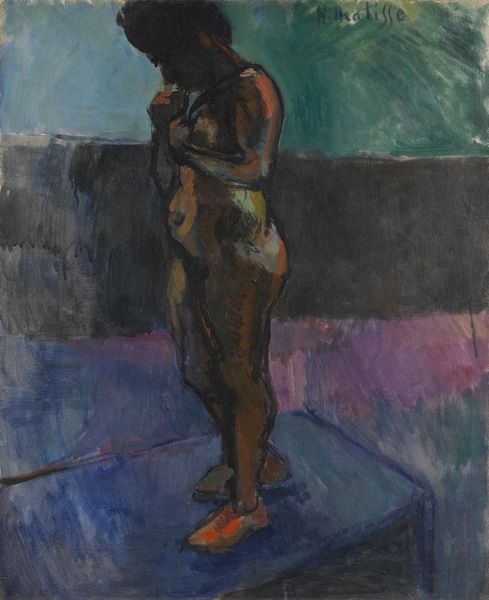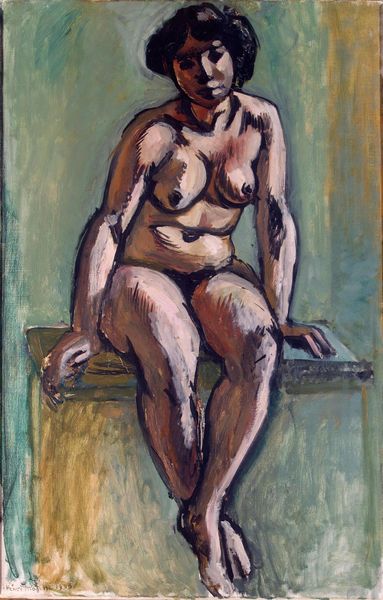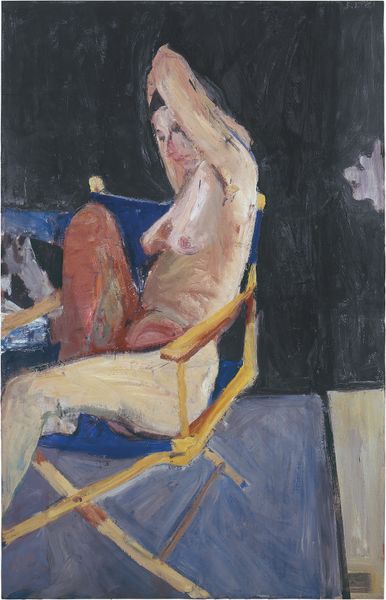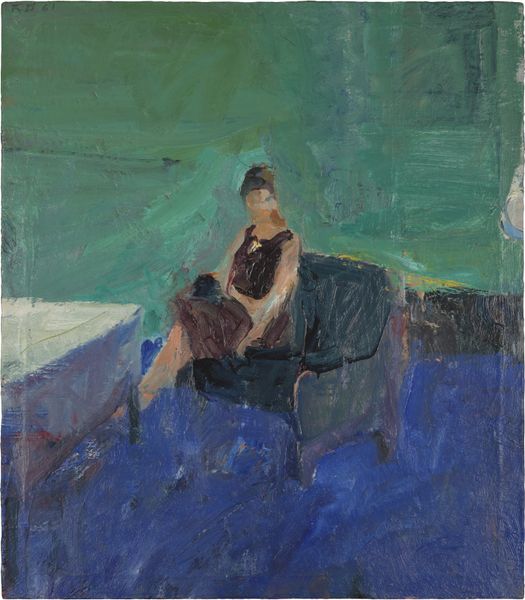
Dimensions: support: 864 x 762 mm
Copyright: By permission of the estate of the artist | CC-BY-NC-ND 4.0 DEED, Photo: Tate
Editor: Here we see Matthew Smith’s "Nude, Fitzroy Street, No. 1," an oil on canvas. I’m immediately struck by the boldness of color, clashing yet somehow harmonious. What’s your take on the cultural context that allowed for such a striking depiction of the nude? Curator: Smith was working in a period increasingly open to exploring the human form, influenced by continental modernism and the legacy of artists like the Fauves. The vibrant palette challenges traditional British sensibilities of the time. Did this boldness impact the reception of his work? Editor: Absolutely. His nudes were both celebrated and critiqued for their perceived vulgarity, disrupting the established aesthetic norms and opening a dialogue about beauty and representation. So, his work was part of a bigger cultural shift? Curator: Precisely. Smith helped pave the way for greater acceptance of expressive and unconventional depictions of the figure in British art. It's interesting to consider how shifting social attitudes toward the body influenced the art world's willingness to embrace his unique vision.
Comments
tatebritain 8 months ago
⋮
http://www.tate.org.uk/art/artworks/smith-nude-fitzroy-street-no-1-n06086
Join the conversation
Join millions of artists and users on Artera today and experience the ultimate creative platform.
tatebritain 8 months ago
⋮
This is among the most advanced in style of Smith's paintings. It is one of a pair showing a model in the same pose from two different points of view, painted in his studio in Fitzroy Street. 'Nude No.2', which belongs to the British Council, shows the model seen from the front, and has slightly more detail in the background. Soon after these were painted Smith, who had already joined the Artists' Rifles, was called to France with the army. After the war he painted little until his stay in Cornwall in 1920. Gallery label, September 2004
